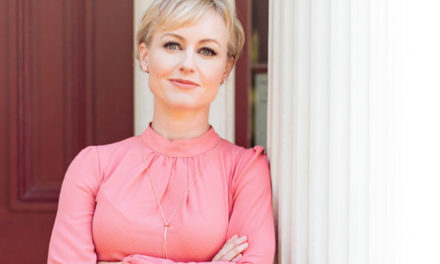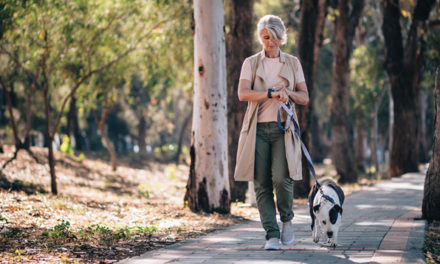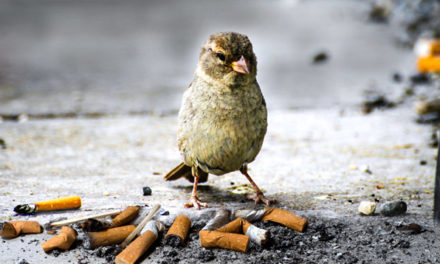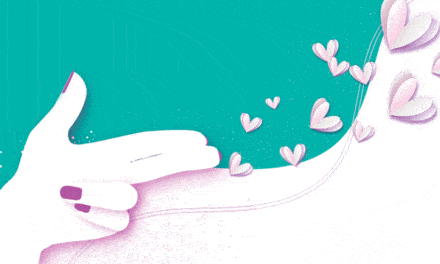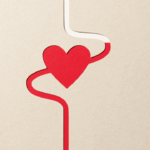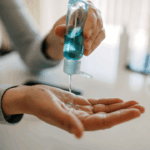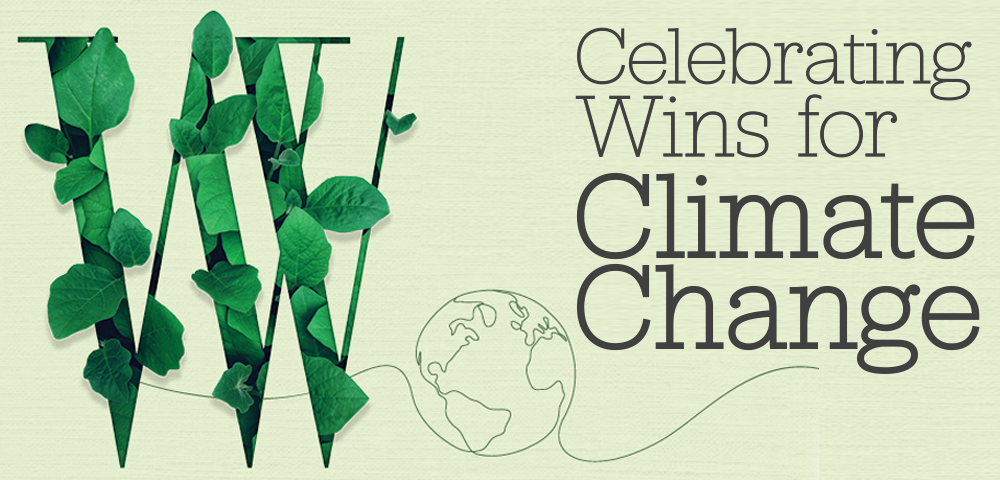
We hope this will inspire you to make small changes, too!
“You cannot get through a single day without having an impact on the world around you. What you do makes a difference, and you have to decide what kind of difference you want to make.”
– Jane Goodall
Scientists studying temperature rise worldwide say they’re at the “hair on fire” stage, pulling out the stops to get public attention to focus on climate change patterns affecting humanity. Tempting as it may be to think “it’s too late” or “there’s nothing I can do as an individual,” consider these points from crowdsourcingsustainability.org
1. THE SIZE OF AN INDIVIDUAL’S FOOTPRINT IS MIND-BOGGLING. An individual produces 19 metric tons of greenhouse gas (GHG) annually in the U.S., enough to fill three Statues of Liberty.
2. THE MICRO DICTATES THE MACRO. Governments and corporations have most of the power in large-scale GHG reduction, but making choices with your wallet can make a difference.
3. THE RIPPLE EFFECT: WE ARE NOW A HIGHLY SOCIAL SPECIES. Studies show that the herd instinct is real. Only one committed person can break out of the pack and lead others to new and better behaviours.
SMALL STEPS, BIG IMPACT!
– Julia Solnier, PhD
Growing up in Europe certainly taught me many valuable life lessons – mindful consumption, active living, and environmental respect are three that immediately come to mind. When I reflect on my Austrian grandmother, Ernestine, who lived to age 93 in excellent physical and mental health, I see that she was a role model who showed everyone around her how to reduce one’s carbon footprint through simple daily habits. For instance, she regularly rode her bike or walked to the local grocery store. Remarkably, she incorporated these healthy habits until her last day on Earth. Ernestine demonstrates how small personal contributions significantly reduce carbon emissions. While life can get quite stressful as we aim to make the most of our time, the following are the top three small habits to incorporate into our daily lives: walking, especially for short journeys, biking when possible, and taking public transport or carpooling.
Final thoughts: Though individual choices may seem small, the impact of collective action, such as setting an example for others, is transformative and can create a substantial difference for a healthier and more sustainable Earth.
MY NATIVE GARDEN
– Kate Rhéaume, ND
My ongoing effort to be an ally for the planet takes the form of cultivating a garden of native plants. Native or indigenous plants are naturally found in your local area and have co-evolved with the wildlife in the region. They differ from exotic or imported plants that may look pretty but do little to support pollinators. Native plants often require less water and maintenance because they adapt to your region’s environmental conditions. It sounds altruistic, but I do it selfishly: I yearn for a yard full of butterflies, birds, and bees. The inspiration for a native garden came from a magical moment shortly after I moved into my new home. Attracted to my contractor’s bright red drill, a ruby-throated hummingbird arrived in the yard during deck construction. It checked out the drill and then disappeared. That was my “if you build it, they will come” moment. Next year’s goal is to reimagine our lawn.
LUNCHES, LAUNDRY, AND PLANET EARTH
– Karlene Karst, BSc Nutrition
As a mom to three kids ages 16, 13, and 9, food and laundry are always on the list. My husband and I committed to reducing our carbon footprint, so we opted for eco-friendly and concentrated detergents, which are very impactful with a family of five. These minimize packaging waste and contribute to overall sustainability. Another critical aspect we take pride in is water conservation. We implemented high-efficiency washers, choose shorter wash cycles, and select cold water settings to conserve energy and reduce the microfibres released from the clothing.
Food is also critical. Grocery lists and food prepping are fundamental to ensuring our family eats healthy, organic food. To help reduce waste, I am choosing reusable containers and utensils to reduce the amount of plastic wrap and bags. I favour bento-style boxes, which allow me to include various fresh foods without additional packaging. I also prepare home-cooked meals and repurpose leftovers in the children’s lunches when possible. Composting our waste is another essential practice. We love our city, which has separate bins for glass, recycling, compost, and garbage. When you make recycling part of your kids’ chores, they learn how to reduce waste from a young age. Being an environmentally aware family is a work in progress, and as the kids get older, we can expand our contributions.
THE SIX Rs OF SUSTAINABILITY
– Stephanie Rubino, ND
Small steps make significant differences, especially when protecting our planet. As a family with two young children, our approach to reducing our carbon footprint consists of simple daily actions, including using LED lights, washing laundry in cold water, turning off lights when not needed, and managing thermostat settings. We have embraced the power of the six Rs of sustainability: rethink, refuse, reduce, reuse, repair, and recycle. Here’s how we incorporate them in our home.
- Rethink. We are mindful of our buying and consumption habits, whether for food, clothes, or anything else – a win for our planet and wallets.
- Refuse. We don’t buy or take items we don’t need, even for free. We believe living with less is rewarding.
- Reduce. For example, we implement ways to reduce water usage, such as shorter showers, running the dishwasher with only full loads, and turning off water while brushing teeth.
- Reuse. Switching from single-use items to reusable ones, such as shopping bags, water bottles, and repurposed jars for storage, can be impactful. Ideas for reusing items are endless.
- Repair. If something is broken, we try to fix it before we ditch it for a new product.
- Recycle. We recycle items we cannot reuse or repair in accordance with our local community guidelines.
A NEW MOM: CLOTH VS. DISPOSABLE DIAPERS
– Jennifer Brix, ND
Some will agree with me, and some may not, but it was for environmental reasons that I chose not to use cloth diapers with my daughter. After hours of research, I came to this conclusion, and it all came down to water. Living at the time in an arid region of Canada, where we experienced five summers of forest fires and water restrictions, it made even more sense.
In Canada, individuals use an average of 215 L, or in the U.S. 82 gal, of water. Growing cotton and manufacturing cloth diapers for one child consumes around 10,000 L (2,641 gal), plus 126,000 L (33,285 gal) to wash them. That’s compared to between 35,000 and 75,000 L (9,246 to 19,812 gal) for disposable diapers.
North Americans tend to take fresh water for granted, as it comes out clean from the tap and is accessible 24/7. However, only 0.5% of the water on Earth is available freshwater. It takes a lot of energy to pump, treat, and heat, which is necessary to sanitize dirty cloth diapers. According to experts, this energy usage creates significant GHG emissions, so reducing water usage and repurposing it is vital in the fight against climate change.
My journey to understanding the pros and cons of cloth vs. disposable diapers led me to change my water usage. We now use rain barrels to collect rainwater, only run the dishwasher when full, and I love to use a hot water bottle on freezing nights to keep my feet warm. I save the lukewarm water in the morning to water my plants. To limit our carbon footprint, I chose eco-conscious diaper brands that use responsibly sourced, plant-based materials from North America rather than shipped from overseas. Using disposable diapers helped me navigate my first few months of motherhood better. Being a new parent is hard enough, so adding shame to your plate for not using what is “supposed to be better” is not worth it. In most parenting choices, the right one is best for your family and your baby.
ENVIRONMENTAL DISCUSSION WITH A 12-YEAR-OLD
– Karen Jensen, ND
My 12-year-old grandson loves to travel. Before a family trip, he exclaimed, “Mom did something terrible for the environment today; she bought individually packed yogurts for our trip!” I thought for a minute, then asked, “How often do you sit on the tarmac at airports with the engine running for hours?” He said, “Oh, all the time.” Then I said, “Then you fly 14 hours to your destination. Which do you think is worse for the environment?” He looked at me wide-eyed. I asked him if he had learned at school about environmental chemicals from various sources, including toxic sprays on foods and the effects of electromagnetic radiation (EMR) on humans and the environment. He said he only learned about recycling. I gently discussed this topic with him: Our environment is becoming increasingly toxic, from the air we breathe, the food we eat, and the water we drink to harmful EMR.
Scientists believe that toxic chemicals in the environment contribute to the steady increase in brain developmental problems in children today. Children and teens have twice the concentrations of chemicals in their bodies compared to their parents, and sadly, they are more susceptible to these chemicals because their brains are still developing. A study shows that children’s mental well-being deteriorates after an average of one hour of screen viewing per day and that effects are more pronounced in adolescents (14–17 years) than younger children. Worse still, EMR disrupts the good microbes in the soil that are crucial for any ecosystem, affecting soil health, plant growth, and the overall sustainability of that ecosystem. I hope to continue this discussion with my grandkids to increase their awareness.
TREES MAKE A BIG IMPACT
– Marita Schauch, ND
Climate change can often seem impossible, but every action counts. I recycle at home, use a drip water system, limit purchases of non-recyclable materials, and buy clothes that will last a lifetime and are always in style. I feel incredible about my contributions at home, but even more so at Tall Tree, the home base for my clinical practice. At Tall Tree, we are planting a legacy with Short Sprouts. For every appointment, Short Sprouts plants a tree. We have planted just over 100,000 trees this year: one for every patient we see in the clinic and five for every Google review.
Our clinic is lit with automatic lights, ensuring that electricity is only used when needed and adding to significant energy savings. We’ve installed automatic taps in our washrooms to minimize water wastage and are serious about recycling. We also said goodbye to wasteful coffee pods and opted for fresh ground coffee, making our caffeine fix eco-friendly. While these initiatives may seem small, they paint a picture of conscious living and responsible health care. All of us at Tall Tree believe that our actions create a positive environmental impact, no matter how modest.
In conclusion, thinking before we make any purchase, using fewer resources, and educating our children can and will have an enormous impact on helping preserve the cleanliness and health of our planet for future generations.


